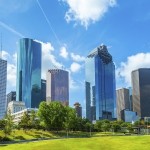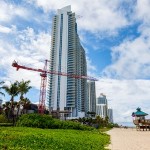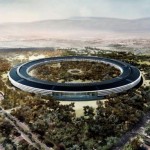 In 1952, Norwegian skier Stein Eriksen captured the attention of sports fans all over the world when he took the Olympic gold medal in the giant slalom in his hometown of Oslo. A charismatic figure with impeccable style and grace on the slopes, Eriksen quickly established himself as one of the sport’s first stars. Following his retirement from competitive skiing, Erik moved to the United States where he worked as a ski instructor at a number of different resorts. He passed away in December, 2015 at the age of 88 in Park City, Utah. At the time of his death he was the director of skiing at the nearby Deer Valley Resort. Now, his legacy is commemorated in a luxury residential complex at Deer Valley which bears his name.
In 1952, Norwegian skier Stein Eriksen captured the attention of sports fans all over the world when he took the Olympic gold medal in the giant slalom in his hometown of Oslo. A charismatic figure with impeccable style and grace on the slopes, Eriksen quickly established himself as one of the sport’s first stars. Following his retirement from competitive skiing, Erik moved to the United States where he worked as a ski instructor at a number of different resorts. He passed away in December, 2015 at the age of 88 in Park City, Utah. At the time of his death he was the director of skiing at the nearby Deer Valley Resort. Now, his legacy is commemorated in a luxury residential complex at Deer Valley which bears his name.
The Stein Eriksen Residences consist of a sprawling group of alpine ski chateaus which house 14 single family homes, 40 condominiums, a restaurant, pool, spa and gymnasium. The residential units feature a variety of luxury details and amenities including radiant-heat floors, steel floating stairways and wraparound windows which offer expansive views of Deer Valley. The residences’ aesthetic blends classic and contemporary elements in a style its designers refer to as “Modern Mountain.”
Deer Valley Resort was originally established in the 1930s and has since grown to become one of the premier skiing destinations in the Central Rockies. Well-known for its upscale amenities, the Stein Eriksen Residences constitute the latest addition to the many housing and lodging accommodations at Deer Valley.
Here at Construction Protection Systems we’re proud to have had the opportunity to play a part, however small, in the development of the namesake residences of one of skiing’s most beloved figures. Stay tuned for more updates from the makers of 1-2-3 Door Shield – The original, reusable door protection system.

 In July of 1990, a
In July of 1990, a  Since the organization was founded in 1954 as a division of Catholic Health Initiatives, CHI St. Luke’s Health has been providing the people of the Greater Houston area with comprehensive medical care from a number of different health facilities. Among these are seven hospitals, six medical groups and four outpatient and specialty clinics.
Since the organization was founded in 1954 as a division of Catholic Health Initiatives, CHI St. Luke’s Health has been providing the people of the Greater Houston area with comprehensive medical care from a number of different health facilities. Among these are seven hospitals, six medical groups and four outpatient and specialty clinics.






Recent Comments